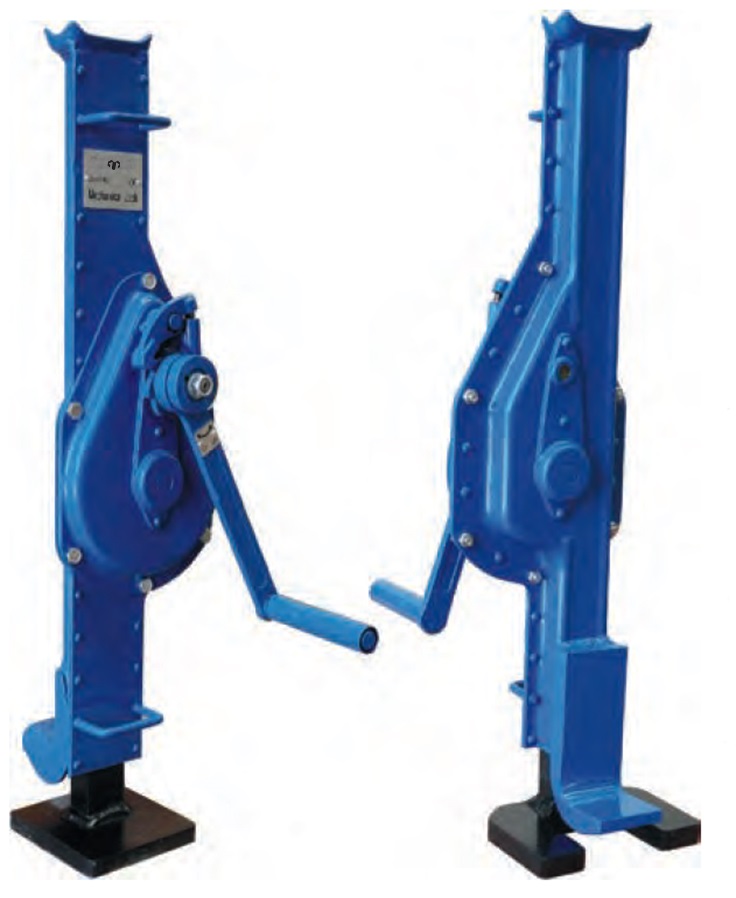
Speed regulation method of mechanical jack
Keyword:mechanical jack Time:2019-11-8 13:11:48
Speed regulation method of mechanical jack
The speed regulation of mechanical jack should follow certain steps to adjust the speed we need and meet various requirements. Next, we will specifically analyze the steps and precautions for debugging the mechanical jack.
Speed debugging should be carried out one by one in the hydraulic system which drives and controls a mechanical mechanism. When debugging a circuit, the rest of the circuit should be closed (oil-free).
When adjusting the speed, the clearance of the guide rail and the position accuracy of the moving parts of the mechanical jack must be adjusted at the same time, so as not to cause the transmission parts to be too tight and clamped. If there is air in the jack, the speed is not stable. Open the exhaust valve of the mechanical jack during the debugging process to remove the air trapped in the jack. For mechanical jacks without exhaust valves, the mechanical jacks must move back and forth several times. At the same time, the pipe joints of the oil chamber should be loosened properly during the movement. When oil spills from the threaded joints, the pipe joints should be tightened.
In the process of debugging, the buffer device should be adjusted at the same time until the stability requirement of the mechanism carried by the mechanical jack is satisfied. If the buffer device of the mechanical jack is not adjustable, the hydraulic jack should be removed and debugged on the test bench after qualified debugging treatment.
When adjusting speed, the synchronous circuit of double-acting Jack should first adjust the two jacks to the same starting position, and then adjust the speed.
Speed adjustment should be carried out under normal oil pressure and normal oil temperature. For the hydraulic system which requires high speed stability, it is necessary to observe the change of its speed under load.
After adjusting the speed of the mechanical jack, we must check whether the parts are normal before using. At the same time, we should strictly abide by the stipulations in the main parameters when using the jack. We should not overload it. Otherwise, when the lifting height or the lifting tonnage exceeds the stipulation, serious oil leakage will occur on the top of the cylinder.
The lifting principle of the jack that the company employees need to know is not very clear to many people in our company. In this way, there will be some potential safety hazards in our production process. So in order to popularize the basic knowledge of jack of our company staff. Today, we will explain to you what is the lifting principle of jack?
The jack is the simplest lifting equipment in the lifting family, and its height is generally less than one meter. It has two types: mechanical and hydraulic. The jack is mainly used in the factory, mining, transportation and other departments as vehicle repair and other lifting, support and other work. Its structure is light, firm, flexible and reliable, one person can carry and operate. The jack is a light lifting equipment which uses rigid lifting parts as working devices and lifts weights in a small stroke through top bracket or bottom bracket claw. According to the working principle, jacks are divided into: (1) screw jacks: jacks with screw or lifting sleeve driven by screw as rigid jacks. (2) Rack jack: jack with rack as rigid jack. (3) Hydraulic jack: jack with plunger or hydraulic cylinder as rigid jack.


- No information
-
1. Design objective of electronic crane scale network management. (1) Adopt advanced distributed data processing techno…
-
Electronic crane scale bearing platform installation to focus Electronic crane scale can be installed generally on the li…


